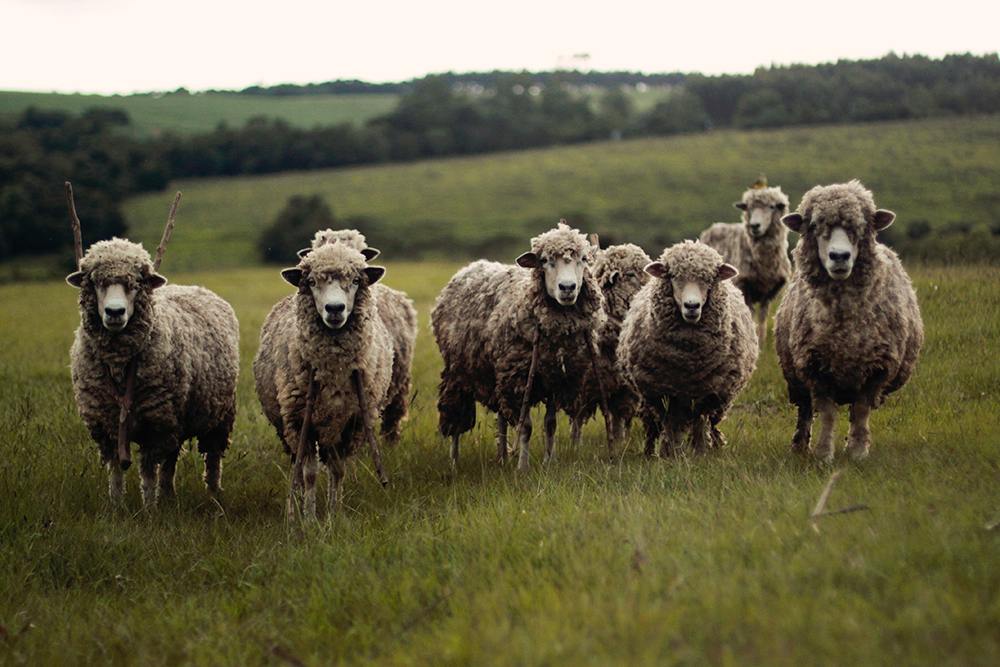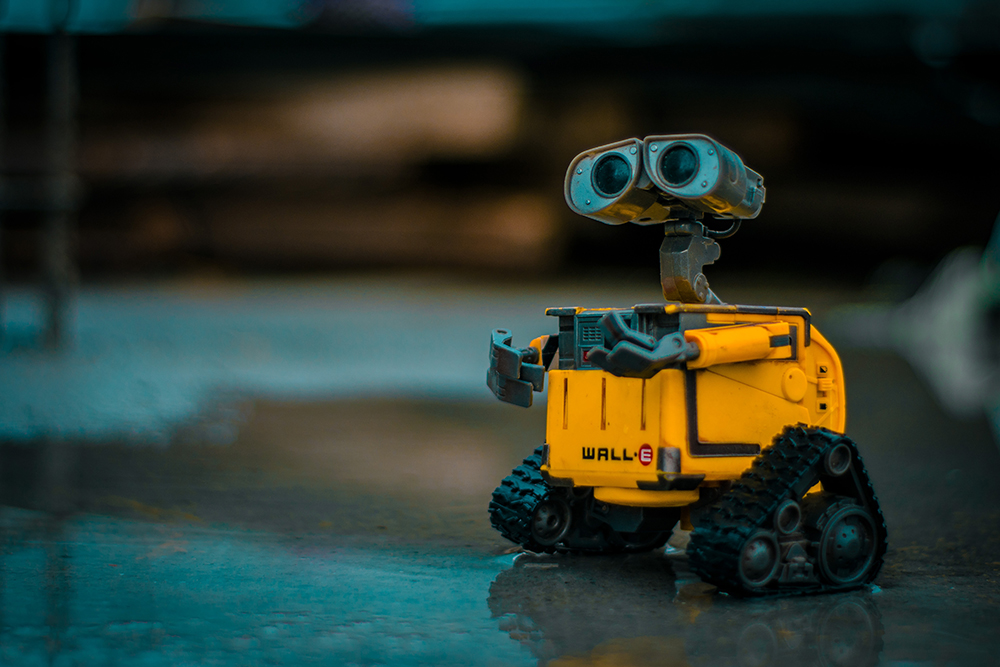In May 2020 the media was interested in a video by Rocos showing a robot from Boston Dynamics trying to be a shepherd dog. You could see the artificial quadruped running towards a flock of sheep. “Now, it’s clear that the video is mostly a fun teaser rather than a serious claim by Rocos (or Boston Dynamics) that robots will soon be replacing sheepdogs.” (The Verge, 22 May 2020) According to the magazine, it does invite a tantalizing question: if that did happen, “how well would the robots fare” (The Verge, 22 May 2020)? “Terrible”, is the straight answer of sheep farmer and author James Rebanks. “The robot might be an amazing tool for lots of things but it is worthless and unwanted as a sheepdog …” (The Verge, 22 May 2020) However, the profession of shepherd is not everywhere in the world the dream of all boys and girls, and shepherd dogs do not fall from the sky. It is also not clear whether there is a big difference for the sheep and how positively or negatively they react to the machine. It is just as unclear whether lambs that have never met real dogs would be comfortable with it. This would have to be researched in animal psychology and social robotics and in disciplines such as animal-machine interaction, which are still in their infancy. Only then would one know whether the shepherd interviewed by the magazine is right.
A Robot Enforces Social Distancing
According to Gizmodo, a robot from Boston Dynamics has been deployed to a park in Singapore to remind people they should follow social distancing guidelines during the pandemic. Spot is not designed as a security robot, like the K5 or the K3 from Knightscope. But it has other qualities: it can walk on four legs and is very fast. The machine, which was set loose on 8 May 2020 in Bishan-Ang Mo Kio Park, “broadcasts a message reminding visitors they need to stay away from other humans, as covid-19 poses a very serious threat to our health”. It “was made available for purchase by businesses and governments last year and has specially designed cameras to make sure it doesn’t run into things.” (Gizmodo, 8 May 2020) According to a press release from Singapore’s GovTech agency, the cameras will not be able to track or recognize specific individuals, “and no personal data will be collected” (Gizmodo, 8 May 2020). COVID-19 demonstrates that digitization and technologization can be helpful in crises and disasters. Service robots such as security robots, transport robots, care robots and disinfection robots are in increasing demand.
Care Robots in Practice
The paper “Co-Robots as Care Robots” by Oliver Bendel, Alina Gasser and Joel Siebenmann, accepted at the AAAI 2020 Spring Symposium “Applied AI in Healthcare: Safety, Community, and the Environment”, can be accessed via arxiv.org/abs/2004.04374. From the abstract: “Cooperation and collaboration robots, co-robots or cobots for short, are an integral part of factories. For example, they work closely with the fitters in the automotive sector, and everyone does what they do best. However, the novel robots are not only relevant in production and logistics, but also in the service sector, especially where proximity between them and the users is desired or unavoidable. For decades, individual solutions of a very different kind have been developed in care. Now experts are increasingly relying on co-robots and teaching them the special tasks that are involved in care or therapy. This article presents the advantages, but also the disadvantages of co-robots in care and support, and provides information with regard to human-robot interaction and communication. The article is based on a model that has already been tested in various nursing and retirement homes, namely Lio from F&P Robotics, and uses results from accompanying studies. The authors can show that co-robots are ideal for care and support in many ways. Of course, it is also important to consider a few points in order to guarantee functionality and acceptance.” Due to the outbreak of the COVID-19 pandemic, the physical meeting to be held at Stanford University was postponed. It will take place in November 2020 in Washington (AAAI 2020 Fall Symposium Series).
Imitating the Agile Locomotion Skills of Four-legged Animals
Imitating the agile locomotion skills of animals has been a longstanding challenge in robotics. Manually-designed controllers have been able to reproduce many complex behaviors, but building such controllers is time-consuming and difficult. According to Xue Bin Peng (Google Research and University of California, Berkeley) and his co-authors, reinforcement learning provides an interesting alternative for automating the manual effort involved in the development of controllers. In their work, they present “an imitation learning system that enables legged robots to learn agile locomotion skills by imitating real-world animals” (Xue Bin Peng et al. 2020). They show “that by leveraging reference motion data, a single learning-based approach is able to automatically synthesize controllers for a diverse repertoire behaviors for legged robots” (Xue Bin Peng et al. 2020). By incorporating sample efficient domain adaptation techniques into the training process, their system “is able to learn adaptive policies in simulation that can then be quickly adapted for real-world deployment” (Xue Bin Peng et al. 2020). For demonstration purposes, the scientists trained “a quadruped robot to perform a variety of agile behaviors ranging from different locomotion gaits to dynamic hops and turns” (Xue Bin Peng et al. 2020).
Cybathlon 2020 Postponed
How to Use Service Robots in the Coronavirus Disease
COVID-19 demonstrates that digitization and technologization can be helpful in crises and disasters. In China, service robots deliver medicine and food in hospitals and quarantine stations, and drones track people without breathing masks. Those who has to stay at home can continue to perform their tasks and receive further training via a computer workstation and e-learning applications. Globalisation is a problem in the spread of the virus, but also a solution in combating it: research was immediately carried out worldwide on a drug against SARS-CoV-2. The use of robots and drones in China has been criticised for the loss of privacy. There was also criticism of the fact that the communist party and the media market the use of robots as a chinese success story, but that some of them originate from abroad. Well-known transport robots are, for example, from Starship Technologies and Savioke. Both companies are based in California.
The Comeback of Cozmo
According to The Robot Report, Anki’s little robots might be making a comeback. Digital Dream Labs in Pittsburgh acquired the patents, trademarks, and domain. The start-up company “is planning to revive and manufacture more units of each product in the following order: Overdrive, Cozmo, Vector” (The Robot Report, 26 December 2019). Digital Dream Labs founder H. Jacob Hanchar told The Robot Report “the goal is to have all three products available for purchase for Christmas 2020” (The Robot Report, 26 December 2019). The small robots belong to the best that the industry has produced. What is special about Cozmo is the many emotions it can show (but of course doesn’t have). It also has face recognition and a night vision device. The future of it and its siblings is not yet clear, as Digital Dream Labs has not purchased “physical assets and inventory” (The Robot Report, 26 December 2019). Fans are waiting and hoping.
Robots against Plastic Waste
WasteShark is a remotely controlled robot by Ranmarine Technologies that collects plastics from the surface of lakes and oceans. “Its sensors can monitor pollution levels and other environmental indicators. It is electrically powered, emission-free and can collect hundreds of kilos of rubbish at a time.” (Euronews, 15 December 2019) According to Euronews, Richard Hardiman, the founder of the start-up-company, said: “What we’re trying to do is create a small enough vessel that will get into tight spaces where waste collects, particularly in the harbours and the ports, and stop all that waste being taken out into the greater ocean.” (Euronews, 15 December 2019) The project received support from the European funds allocated to making plastic circular. An overview of the most important projects against plastic waste in water can be found here.
A Garbage Robot for Space
According to Tages-Anzeiger (9 December 2019), a consortium led by a Swiss start-up named Clearspace has won a ESA competition and was awarded the contract for a waste disposal mission in orbit. The so-called “chaser” of the EPFL spin-off has four robotic arms with which a remnant of the ESA launch vehicle Vega is to be captured and drawn. Chaser and the part of Vespa will then burn up together in the atmosphere. Later, the company wants to look for new targets. According to Luc Piguet, the issue of space debris is more urgent than ever. The founder and CEO of Clearspace says that there are currently almost 2,000 active and 3,000 inactive satellites. The problem is likely to worsen over the next few years. Where people roam, the mountains of rubbish grow and space fills with rubbish. This may sound literary, but above all, it’s terrible. Robots could be a solution both on Earth and in orbit.
Learning How to Behave
In October 2019 Springer VS published the “Handbuch Maschinenethik” (“Handbook Machine Ethics”) with German and English contributions. Editor is Oliver Bendel (Zurich, Switzerland). One of the articles was written by Bertram F. Malle (Brown University, Rhode Island) and Matthias Scheutz (Tufts University, Massachusetts). From the abstract: “We describe a theoretical framework and recent research on one key aspect of robot ethics: the development and implementation of a robot’s moral competence. As autonomous machines take on increasingly social roles in human communities, these machines need to have some level of moral competence to ensure safety, acceptance, and justified trust. We review the extensive and complex elements of human moral competence and ask how analogous competences could be implemented in a robot. We propose that moral competence consists of five elements, two constituents (moral norms and moral vocabulary) and three activities (moral judgment, moral action, and moral communication). A robot’s computational representations of social and moral norms is a prerequisite for all three moral activities. However, merely programming in advance the vast network of human norms is impossible, so new computational learning algorithms are needed that allow robots to acquire and update the context-specific and graded norms relevant to their domain of deployment. Moral vocabulary is needed primarily for moral communication, which expresses moral judgments of others’ violations and explains one’s own moral violations – to justify them, apologize, or declare intentions to do better. Current robots have at best rudimentary moral competence, but with improved learning and reasoning they may begin to show the kinds of capacities that humans will expect of future social robots.” (Abstract “Handbuch Maschinenethik”). The book is available via www.springer.com.









